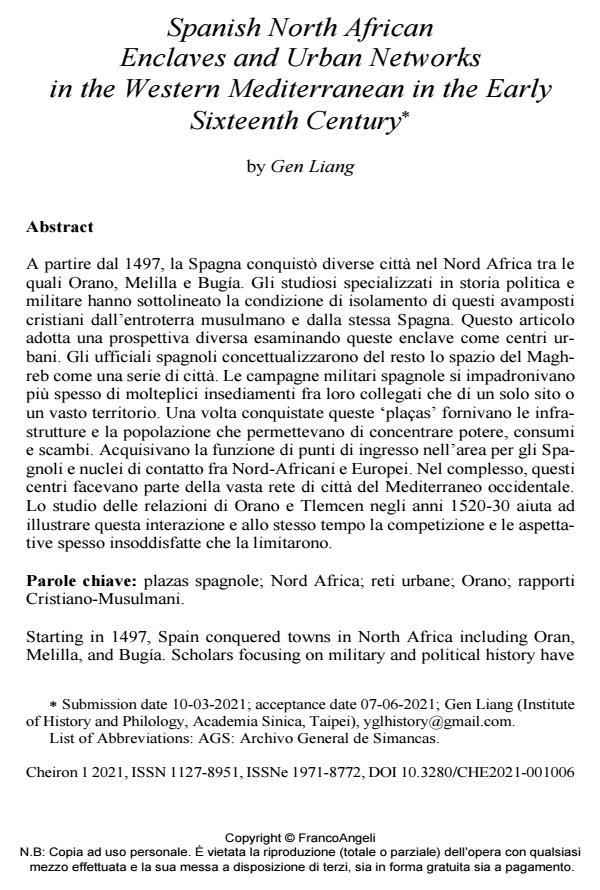Spanish North African Enclaves and Urban Networks in the Western Mediterranean in the Early Sixteenth Century
Journal title CHEIRON
Author/s Gen Liang
Publishing Year 2022 Issue 2021/1
Language English Pages 30 P. 118-147 File size 658 KB
DOI 10.3280/CHE2021-001006
DOI is like a bar code for intellectual property: to have more infomation
click here
Below, you can see the article first page
If you want to buy this article in PDF format, you can do it, following the instructions to buy download credits

FrancoAngeli is member of Publishers International Linking Association, Inc (PILA), a not-for-profit association which run the CrossRef service enabling links to and from online scholarly content.
Starting in 1497, Spain conquered towns in North Africa including Oran, Melilla, and Bugía. Scholars focusing on military and political history have emphasized the Christian outposts’ isolation from the Muslim hinterland and the Spain itself. This article takes a different direction by examining the enclaves as urban centres. Spanish officials conceptualized Maghribi space as a series of towns. Iberian campaigns often seized a sequence of settlements, rather than just one site or broad territories. Once conquered, these ‘plaças’ formed infrastructure and demographic centres that concentrated power, consumption, and exchange. They served as entry points for Spaniards in the area and as contact points for North Africans with Europeans. Overall, the enclaves participated in a network of western Mediterranean towns. A focus on Oran-Tlemcen relations in the 1520-1530s helps illustrate such interaction, as well as the competition and unmet expectations that also limited connections.
Keywords: Spanish plazas; North Africa; Urban networks; Oran; Christian- Muslim relations
Gen Liang, Spanish North African Enclaves and Urban Networks in the Western Mediterranean in the Early Sixteenth Century in "CHEIRON" 1/2021, pp 118-147, DOI: 10.3280/CHE2021-001006